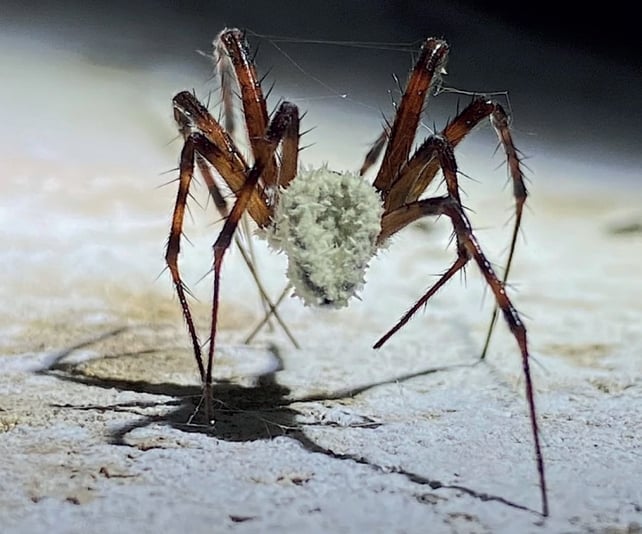Scientists Photograph ‘Zombie’ Spiders Infected With Fungi

Scientists have discovered and photographed cave-dwelling “zombie” spiders that have been infected by parasitic fungi.
It may sound like the plot of the video game and TV show The Last of Us but the infected spiders were found living in several cave systems around Northern Ireland, U.K. The fungus essentially takes control of the spider: changing its normal behavior of hiding in lairs to forcing it out on exposed walls of caves where it dies.
The researchers found that the fungus manipulates the spider’s brain via dopamine; the chemical messenger that delivers happiness. Scientists from the Centre for Agriculture and Biosciences International found that the fungus mirrors the behavior of ants in the rainforests of Brazil that can get infected by Ophiocordyceps — a real-life quirk that inspired the creators of The Last of Us.
After discovering the infected spider in the gunpowder store at Castle Espie in County Down, the team of scientists, led by Dr Harry Evans, began looking for more examples. They brought in a cave explorer, professionally known as a speleologist, to aid them.
The team concluded that the fungus was native to the local area and it targets indigenous cave-dwelling spiders. They also found that the fungus prefers man-made habitats such as cellars, tunnels, and culverts.
Two different species of spiders, Metellina merianae and Meta menardi, were found to have succumbed to the fungus. Both favor dark, damp caves but Dr Evans says there is still much more research to be done. As for the newly-discovered fungus, it has been named Gibellula attenboroughii after Sir David Attenboroigh of wildlife documentary fame.
The newly-discovered zombie fungus will be of interest to photographers. The aforementioned Ophiocordyceps that haunts ants in Brazilian rainforests have been a magnet for scientific-minded photographers. In 2022, Roberto García-Roa won the BMC Ecology and Evolution image competition with an unsettling photo of a dead ant in the Peruvian jungle of Tambopata.
“Spores of the so-called ‘Zombie’ (genera Ophiocordyceps) fungus infect arthropods by infiltrating their exoskeleton and minds. As a result, parasitized hosts are compelled to migrate to a more favorable location for the fungus’s growth,” García-Roa explained at the time.
“Here, they await death, at which point the fungus feeds on its host to produce fruiting bodies full of spores that will be jettisoned to infect more victims — a conquest shaped by thousands of years of evolution.”
The research is published in Fungal Systematics and Evolution.
Image credits: Photographs by Evans et al., Fungal Systematics and Evolution, 2025